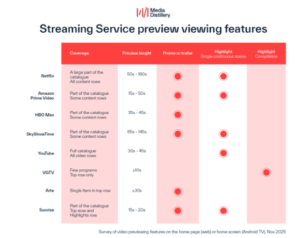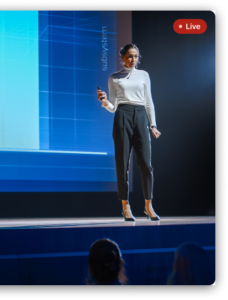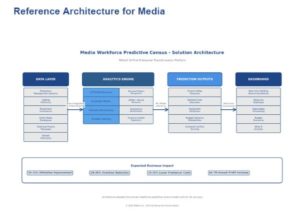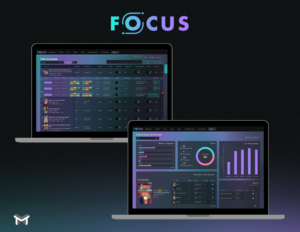Witbe – Greening the streaming: how real device testing can drive sustainability in the media industry

Yoann Hinard, COO, Witbe
As millions of users consume streaming video content across various platforms daily, video app providers and mobile network operators face immense pressure to manage data usage and bandwidth efficiently. This challenge presents an opportunity to make the industry more sustainable. Leveraging data analytics captured through real device testing, streaming video service providers can not only optimize data transmission but also reduce energy consumption and promote sustainable user behavior. Vodafone, Telefonica, and Meta have already communicated interesting results in this field.
The increasing demand for high-quality video streaming
The demand for video streaming services has skyrocketed in recent years, with platforms like YouTube, Netflix, and TikTok becoming central to how people consume media. However, this growth comes with significant resource spend and environmental challenges. Video streaming requires substantial data transmission, which in turn leads to increased energy consumption. This energy is often derived from non-renewable sources, contributing to the industry’s carbon footprint. With video now consuming a large portion of network bandwidth, mobile operators and video service providers must take measures to manage this surge in data usage.
The challenges of streaming with limited resources
The biggest challenge for video service providers and mobile network operators is finding the sweet spot between data consumption, video quality, and viewer expectations. Some of the techniques that are used today to improve video streaming quality or reduce data consumption may not reach a common goal.
HTTP adaptive bitrate streaming, in its default implementation, will try to use as much as data as possible to reach the highest available video quality level. “Pre-fetching”, where the first few seconds of the next video set to play are automatically loaded in advance to allow users scroll between videos without any buffering, can lead to “over-fetching”, where more data is downloaded than necessary. Throttling, where mobile operators intentionally slow down or limit the data transfer rate, can result in lower resolution, longer buffering times, and overall degraded user experience.
While mobile network operators try to keep their service working properly without building costly new infrastructure to deal with the expanded load, video service providers are under pressure to limit their app’s own data usage or have it throttled and risk losing frustrated viewers.
Data analytics can lead to sustainable streaming

Data analytics can play a crucial role in addressing these challenges by enabling more efficient data transmission and energy use while boosting streaming quality of experience (QoE). One of the key areas where data analytics can contribute is in optimizing video encoding and adaptive bitrate streaming. For instance, video service providers can optimize their bitrate ladders — a process that determines the different quality levels a video can be streamed at based on network conditions. By fine-tuning this process using data analytics, service providers can ensure that they are not “over-encoding” content, which would consume more data and energy than necessary. This approach not only conserves bandwidth but also reduces the load on servers, leading to lower energy use. By striking the right balance between video quality and data consumption, providers can significantly reduce their environmental footprint.
Why quality of experience and data usage benchmarking is essential
Quality of experience and data usage benchmarking technology can help mobile network operators and video service providers strike an ideal balance between streaming video quality and bandwidth usage. Using QoE and data usage benchmarking technology enables operators and providers to gain accurate measurements of an app’s mobile data usage, responsiveness, and video quality across different builds, devices, and networks. With this valuable data, teams can fine-tune their video app or mobile network settings to avoid using more bandwidth than necessary or building entirely new infrastructure.
Teams can also leverage this technology to compare their mobile network or video app with local and global competition. Leveraging data from real devices, they can see how much data a video app consumes on one mobile network versus another, as well as how their video quality offerings compare with other streaming apps. With this valuable information, teams can optimize their bandwidth usage to stay competitive, reduce energy consumption, and offer their viewers the best QoE possible.
Successful deployment of data usage benchmarking technology
Vodafone and Meta are excellent examples of a mobile network operator and a video app provider working together to improve streaming quality while decreasing egress, resulting in improved efficiency. Vodafone and Meta recently announced that they are collaborating on a new way to free up network capacity for all mobile customers, including allowing them to view more high-quality short-form videos.
In an initial three-week test conducted in the UK in April 2024, the companies recorded a meaningful reduction in network traffic for Meta applications across Vodafone’s mobile network. Vodafone freed up additional network resources on some of its most popular 4G/5G sites so that all mobile customers at these busy locations, such as shopping centers and transport hubs, benefitted. This was achieved leveraging state-of-the-art QoE and data usage benchmarking technology, and has already been applied in eleven European markets since June 2024. In July, Telefonica similarly shared via a joint press release with Meta announcing that “the tested configuration significantly reduced video traffic in real network conditions while maintaining the user experience.”
Collaborating on a better future
These accurate measurements can only be obtained through testing and benchmarking on the same real devices and networks that customers are using. With proper real device monitoring, teams can identify areas where quality is being overdelivered (wasting resources) and adjust it to hit the sweet spot between received streaming quality and mobile data consumption. Since both mobile network operators and video service providers want to reduce their own resource spend on streaming video, collaborating together to find an optimal balance from real device monitoring technology is essential. With the exponential growth of data consumption, largely influenced by streaming video, now is the time to optimize network bandwidth management while delivering great video quality.









